The Architecture Of Pre-colonial Africa - Photos - Culture - Nairaland
Nairaland Forum / Nairaland / General / Culture / The Architecture Of Pre-colonial Africa - Photos (7547 Views)
Hausafulani Ladies Are The Most Finest In Africa(photos) / Outrage As Nigerians Perform Traditional Rituals Publicly In South Africa.Photos / 45,000 Virgin Zulu Maidens Step Out Topless For Testing In South Africa (Photos) (2) (3) (4)
| The Architecture Of Pre-colonial Africa - Photos by Rosskii: 4:02am On Apr 08, 2017 |
The Architecture of Pre-Colonial Africa Great Zimbabwe Ruins - 1100 AD Great Zimbabwe is a ruined city in the southeastern hills of Zimbabwe near Lake Mutirikwe and the town of Masvingo. It was the capital of the Kingdom of Zimbabwe during the country's Late Iron Age. Construction on the monument by ancestors of the Shona people began in the 11th century and continued until the 15th century,[1][2] spanning an area of 722 hectares (1,780 acres) which, at its peak, could have housed up to 18,000 people. It is recognised as a World Heritage Site by UNESCO. Great Zimbabwe served as a royal palace for the Zimbabwean monarch and would have been used as the seat of political power. One of its most prominent features were the walls, some of which were over five metres high and which were constructed without mortar.  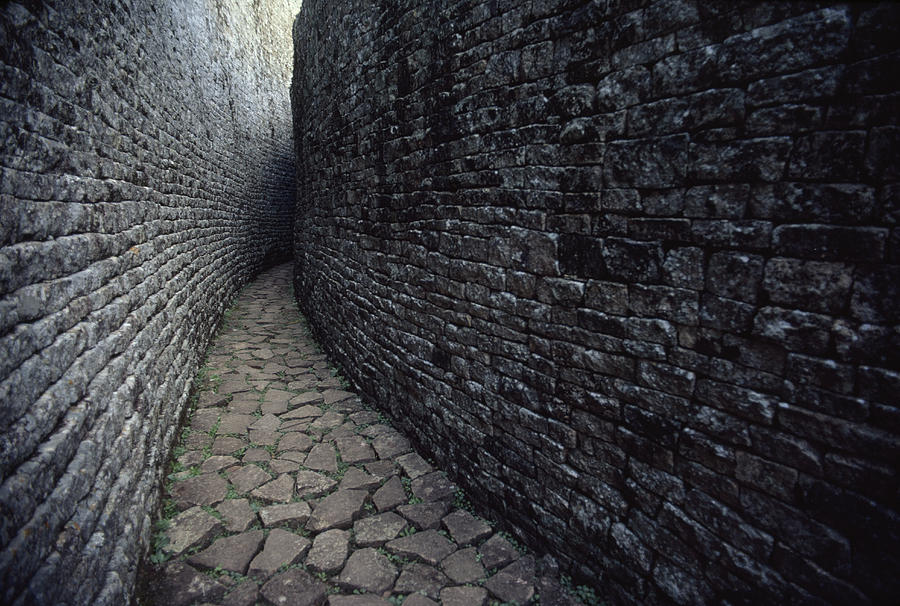   Ruins of Meroe, and Nubian Pyramids Sudan 1200 BC 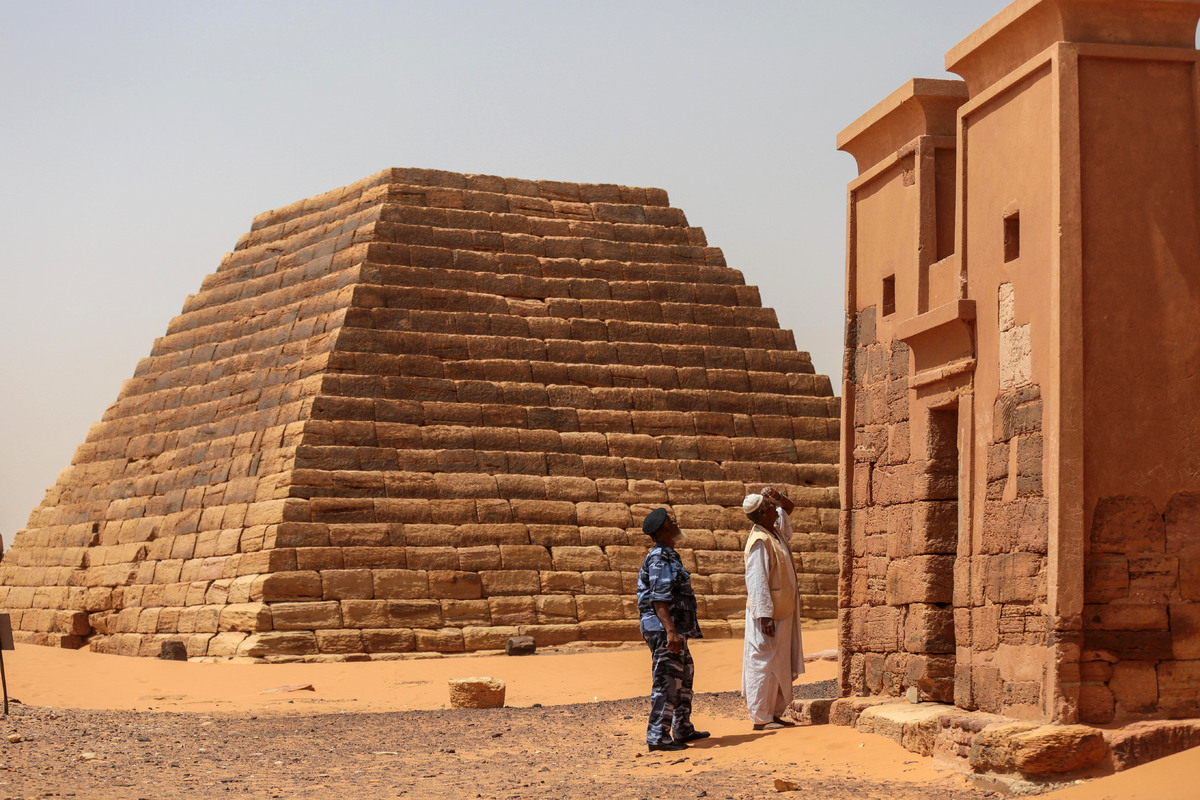 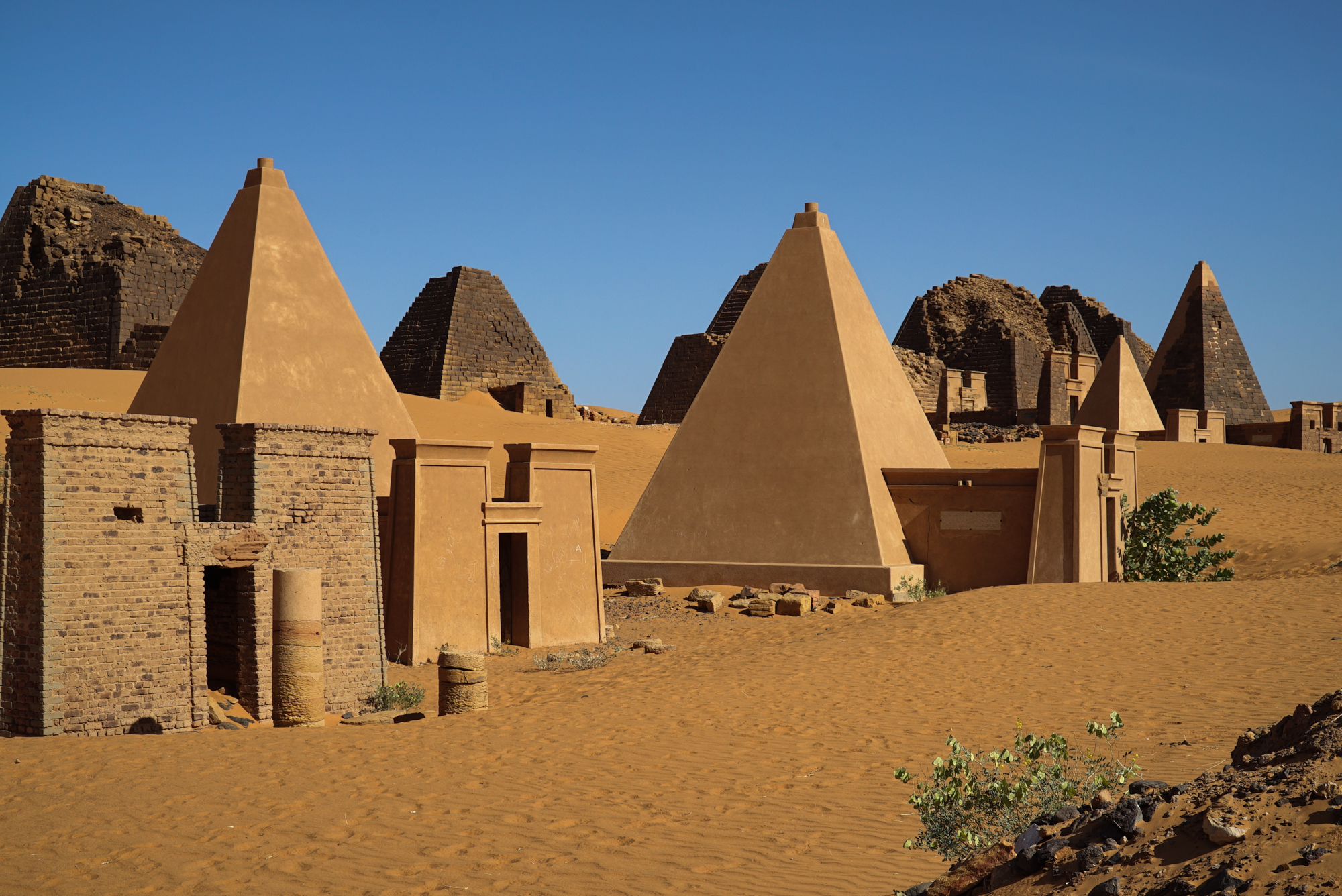 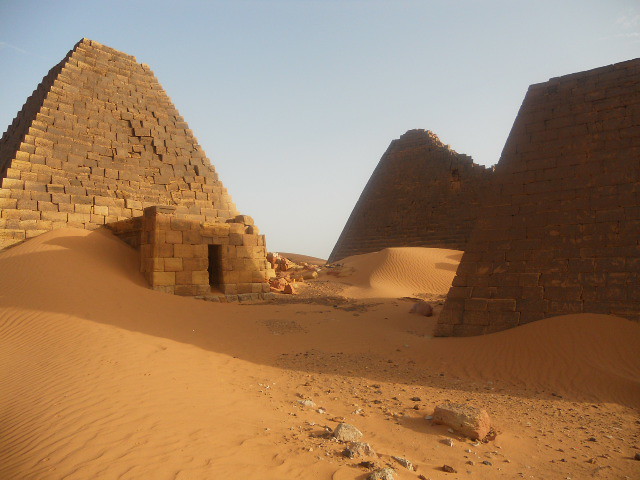 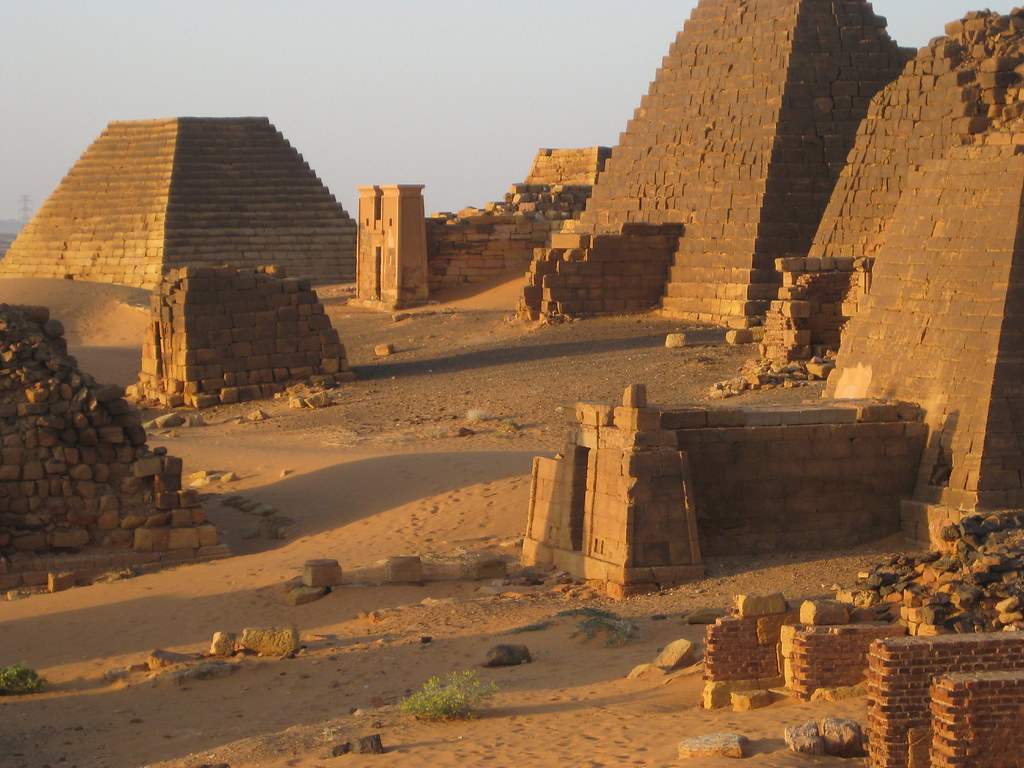 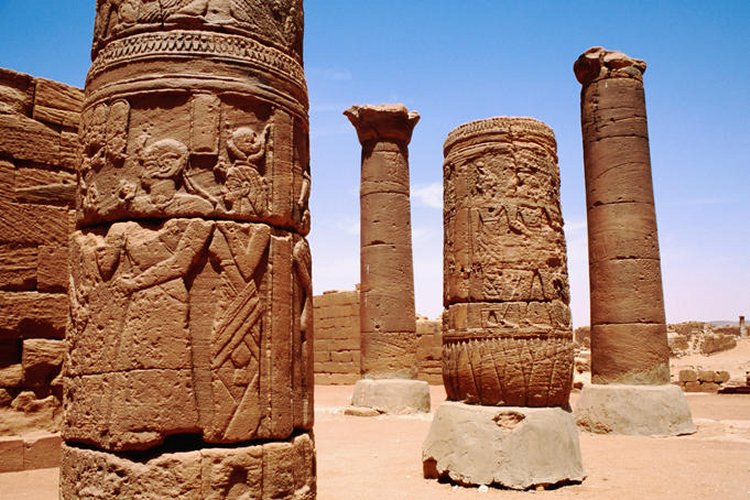 [img]http://1.bp..com/-EqEuYFAuXFo/Ut_uuaxuhpI/AAAAAAAACUQ/A-X4KkDcti8/s1600/IMG_5159.JPG[/img]  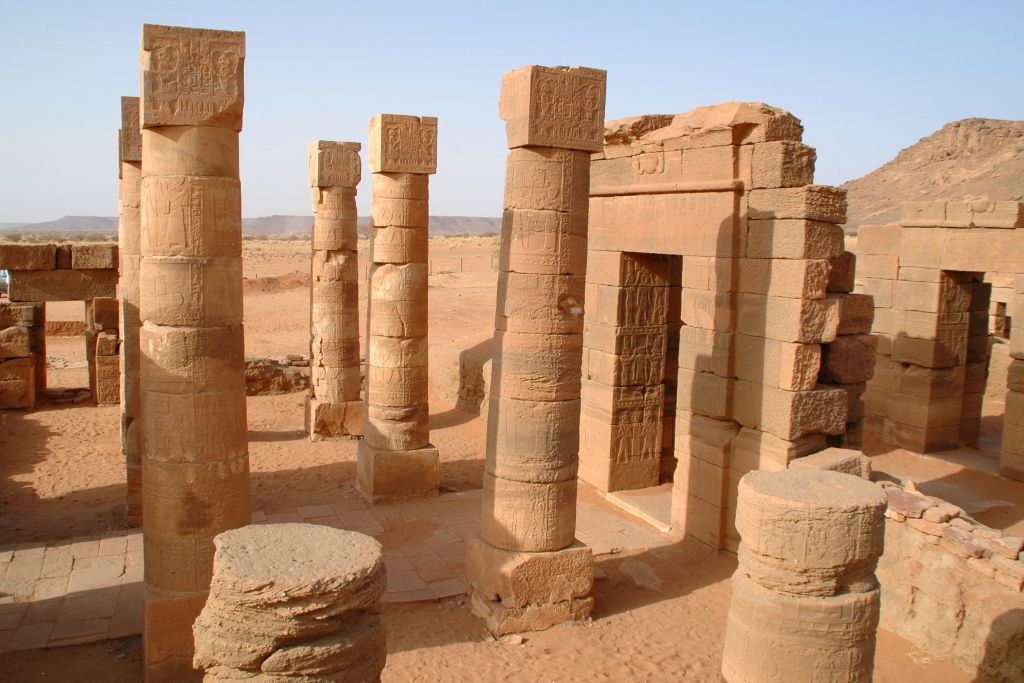 Ruins of Kilwa Kisiwani (Tanzania) 800 AD Kilwa Kisiwani is an archaeological city-state site located along the Swahili Coast on the Kilwa archipelago. It was occupied from at least the 8th century AD and became one of the most powerful settlements along the coast. Kilwa Kisiwani reached its highest point in wealth and commerce between 13th and 15th centuries AD 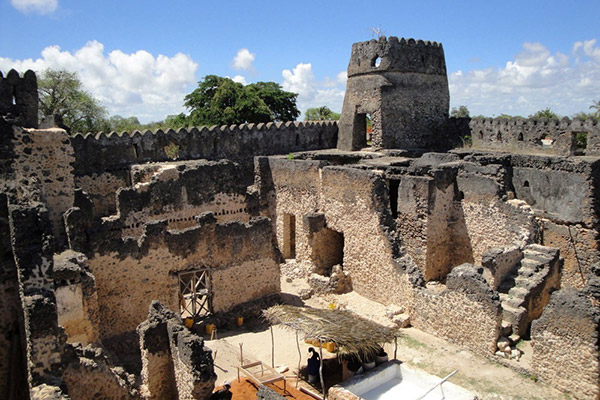    Benin City, Nigeria. 15th Century Painting 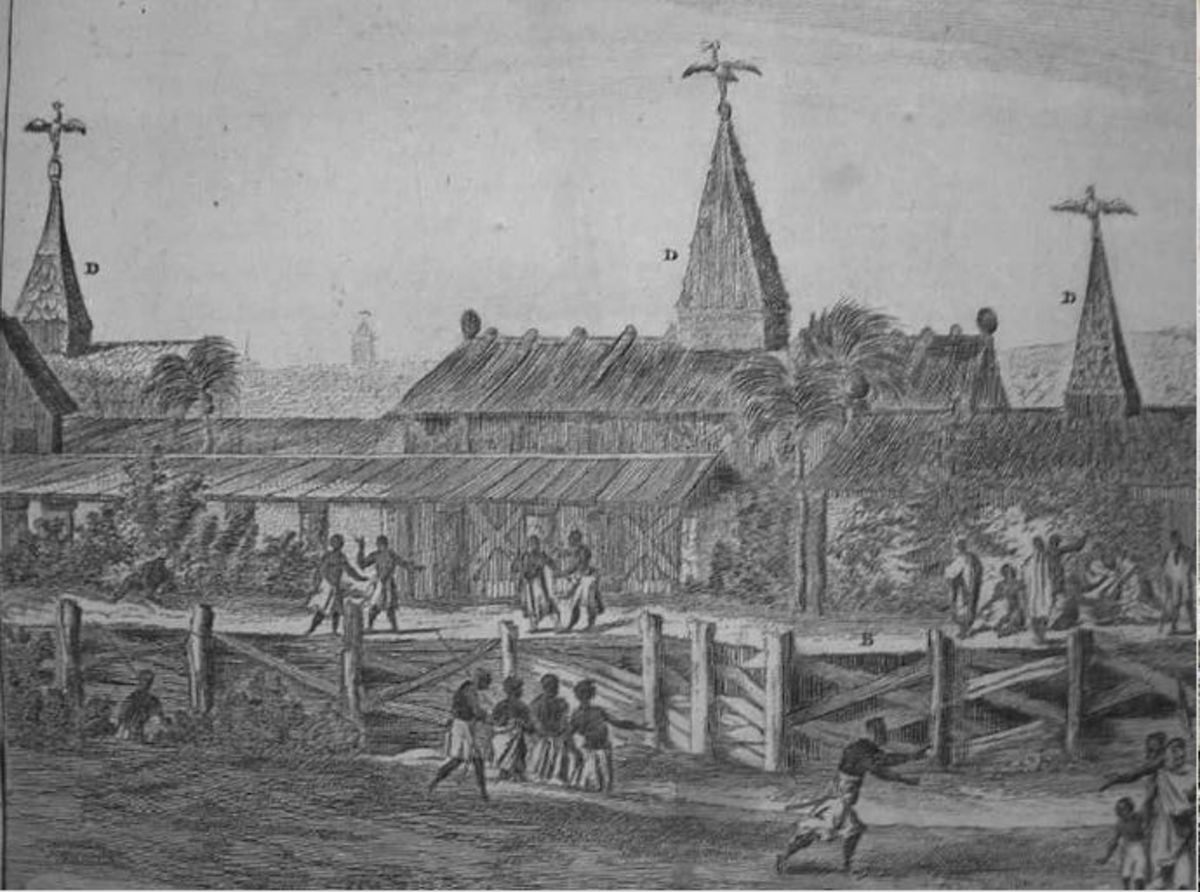 The Walls of Benin, Nigeria: 800 AD Man-made wonders of the world such as the Taj Mahal in India, the Cairo Citadel in Egypt and the Colosseum in Rome attract millions of visitors each year and lay claim to represent the architectural brilliance of our past. But the Benin Moat, also known as the Walls of Benin, lays fallow, crumbling away in Nigeria, a pale imitation of its resplendent former self. At stake is not just the structure itself, but the memory of a once-great empire and a site of colonial resistance. A benign development? The Benin Empire (1440–1897) was a pre-colonial African state, which at its height stretched from the western Igbo tribes on the shores of the Niger River, through parts of the south-west including present day Ondo State, and the isolated islands of Lagos. The empire was famed for nurturing of artistic creativity and using advanced techniques in its bronze and ivory sculptures (especially its life-sized bronze heads) that predate similar works in the Western world. Construction started on the Walls of Benin in 800 AD, now situated in modern day Benin City, capital of Edo State, and continued into the mid-1400s. Stretching seemingly endlessly across the land, the Benin Moat is the world’s second longest man-made construction, falling short of only the Great Wall of China. The Walls of Benin, built as a city fortification against neighbouring rivals such as the Oyo Kingdom to the south and the Sokoto Caliphate in the north, is estimated to be 10,000 miles in length and 2,000 square miles in area. Excavations by British archaeologist Graham Connah in 1960 uncovered a rural network of earthen walls that, he estimated, if spread out over five dry seasons, would have required a workforce of 1,000 labourers working ten hours a day, for seven days a week to construct – a rough total of 150 million man hours. Kano City Walls Nigeria 1100 AD    Ancient Kano Houses   Loropeni Ruins Burkina Faso   The 11,130m2 property, the first to be inscribed in the country, with its imposing stone walls is the best preserved of ten fortresses in the Lobi area and is part of a larger group of 100 stone enclosures that bear testimony to the power of the trans-Saharan gold trade. Situated near the borders of Côte d’Ivoire, Ghana and Togo, the ruins have recently been shown to be at least 1,000 years old. The settlement was occupied by the Lohron or Koulango peoples, who controlled the extraction and transformation of gold in the region when it reached its apogee from the 14th to the 17th century. Much mystery surrounds this site large parts of which have yet to be excavated. The settlement seems to have been abandoned during some periods during its long history. The property which was finally deserted in the early 19th century is expected to yield much more information. Brief Synthesis The dramatic and memorable Ruins of Loropéni consist of imposing, tall, laterite stone perimeter walls, up to six metres in height, surrounding a large abandoned settlement. As the best preserved of ten similar fortresses in the Lobi area, part of a larger group of around a hundred stone-built enclosures, they are part of a network of settlements that flourished at the same time as the trans-Saharan gold trade and appear to reflect the power and influence of that trade and its links with the Atlantic coast. Recent excavations have provided radio-carbon dates suggesting the walled enclosure at Loropéni dates back at least to the 11th century AD and flourished between the 14th and 17th centuries, thus establishing it as an important part of a network of settlements. Ancient Ghana Empire Ruins (Kumbi Saleh) 900 AD  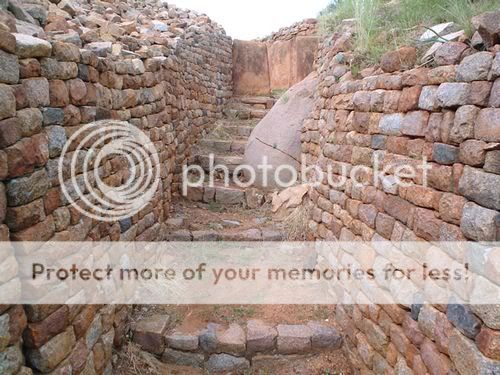   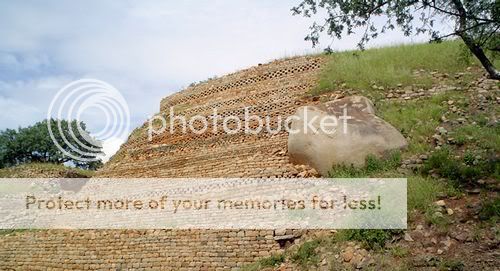    Old Oyo Kingdom Ruins, Nigeria 1100 AD 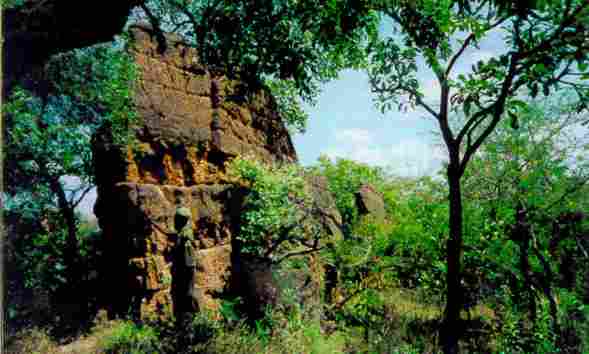 Onitsha Nigeria These houses are from titled men of Onicha and may have Benin influence. 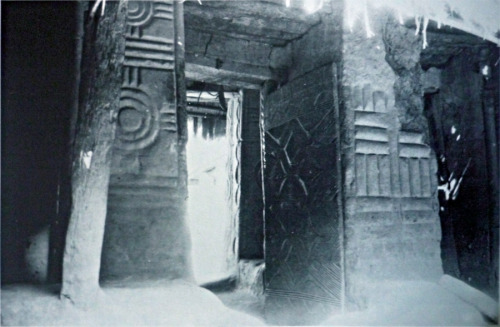 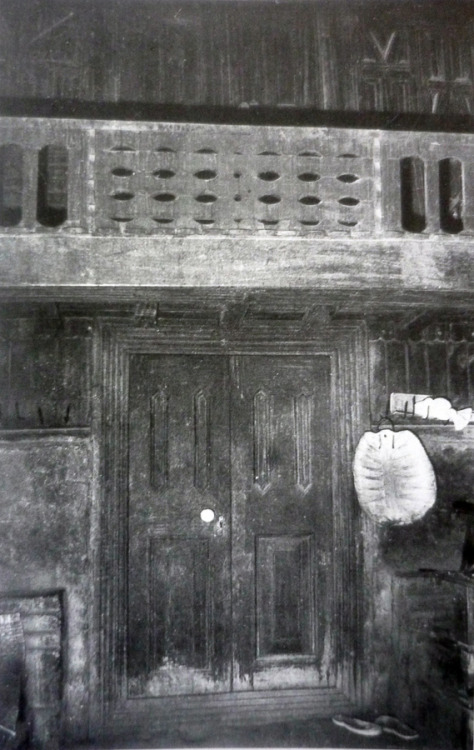 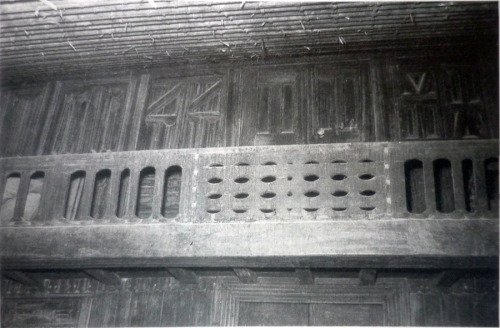 Upstairs balcony. Temple of Soleb, Sudan 1400 BC  Timbuktu, Mali Empire 1100 AD [img]https://theviewfromthelittleman.files./2013/01/mali-timbuktu.jpg?w=625&h=390&crop=1[/img] [img]http://quintessentialruminations.files./2012/04/timbuktu2.jpg[/img] [img]http://1.bp..com/-RVdWwPdA8BI/T4iCkbFViCI/AAAAAAAAAFI/GNZczkXUTVo/s1600/b087.jpg[/img] [img]http://aos.iacpublishinglabs.com/question/aq/700px-394px/null_2e4b6fb5ae1ed6f2.jpg?domain=cx.aos.ask.com[/img]   Gedi Kenya 1200 AD  Village, East Africa  Ancient Temple Burkina Faso 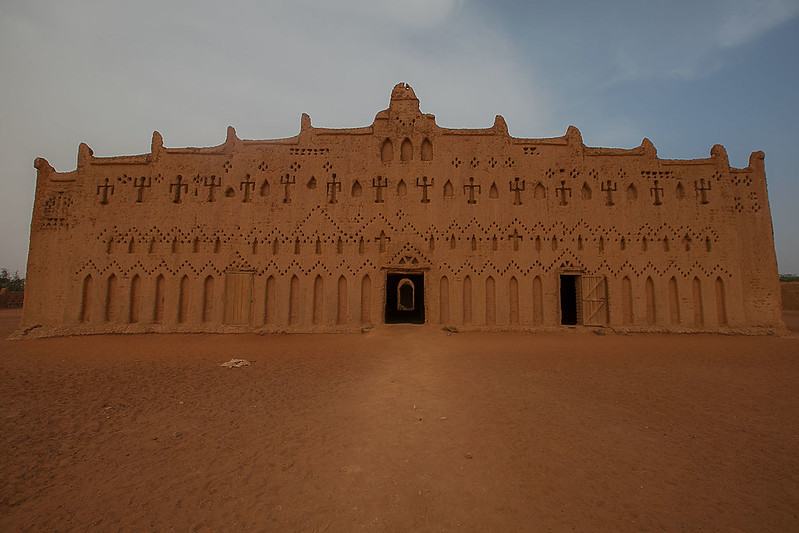 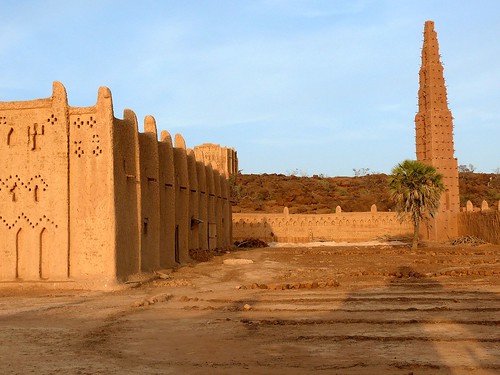 Ruins of Ethiopia (Dated: PRE-HISTORY)  Lalibela Church Ethiopia - Entirely carved from one rock  Obelisk of Axum Ethiopia  Songhai Empire 1400 [img]http://everythingspossible.files./2008/06/p5010061.jpg[/img] [img]http://everythingspossible.files./2008/06/p5010031.jpg[/img] Palace of the chief of Foumban Cameroun      Temple of Karnak, Egypt  Pyramids of Giza Egypt  The Great Sphinx Egypt (Dated PRE-HISTORY) [img]http://bolstablog.files./2010/03/sphinx-riddle.jpg[/img] DE VOLNEY Count Constantine de Volney -- a French nobleman, philosopher, historian, orientalist, and politician -- embarked on a journey to the East in late 1782 and reached Ottoman Egypt were he spent nearly seven months. "All the Egyptians," wrote de Volney, "have a bloated face, puffed-up eyes, flat nose, thick lips – in a word, the true face of the mulatto. I was tempted to attribute it to the climate, but when I visited the Sphinx, its appearance gave me the key to the riddle. On seeing that head, typically Negro in all its features, I remembered the remarkable passage where Herodotus says: ' As for me, I judge the Colchians to be a colony of the Egyptians because, like them, they are black with woolly hair... "When I visited the Sphinx, I could not help thinking that the figure of that monster furnished the true solution to the enigma (of how the modern Egyptians came to have their 'mulatto' appearance) "In other words, the ancient Egyptians were true Negroes of the same type as all native-born Africans. That being so, we can see how their blood, mixed for several centuries with that of the Greeks and Romans, must have lost the intensity of its original color, while retaining nonetheless the imprint of its original mold. "Just think," de Volney declared incredulously, "that this race of Black men, today our slave and the object of our scorn, is the very race to which we owe our arts, sciences, and even the use of speech! Just imagine, finally, that it is in the midst of people who call themselves the greatest friends of liberty and humanity that one has approved the most barbarous slavery, and questioned whether Black men have the same kind of intelligence as whites! "In other words the ancient Egyptians were true Negroes of the same stock as all the autochthonous peoples of Africa and from the datum one sees how their race, after some centuries of mixing with the blood of Romans and Greeks, must have lost the full blackness of its original color but retained the impress of its original mould." M. Constantine de Volney, Travels through Syria and Egypt in the Years 1783, 1784, and 1785 (London: 1787), p. 80-83. http://www.freemaninstitute.com/sphinx.htm 1 Like |
| Re: The Architecture Of Pre-colonial Africa - Photos by dealslip(f): 4:38am On Apr 08, 2017 |
beautiful. We have always had civilisation in Africa. The imperialist came and set us back by several decades when they started hunting humans as machine for their industrialisation and civilization. That gap left behind is still affecting Africa till tomorrow. 3 Likes |
| Re: The Architecture Of Pre-colonial Africa - Photos by ddddon(m): 4:38am On Apr 08, 2017 |
OP this should not be used as a yardstick to say Africa did not benefit from colonialism. Hope you know that. |
| Re: The Architecture Of Pre-colonial Africa - Photos by sarrki(m): 4:39am On Apr 08, 2017 |
I love history God bless you op You are blessed 5 Likes 1 Share |
| Re: The Architecture Of Pre-colonial Africa - Photos by Rosskii: 4:42am On Apr 08, 2017 |
ddddon:Why is a defence of colonialism your first response to the thread? Strange. 4 Likes |
| Re: The Architecture Of Pre-colonial Africa - Photos by spyder880(m): 4:45am On Apr 08, 2017 |
Just one house and you call it architecture? Show us the rest of the town/city with their other facilities. Apart from a few kings palace built by slave Labor, the rest of Africa was not good in terms of buildings. Beautiful pictures from the usual source though. |
| Re: The Architecture Of Pre-colonial Africa - Photos by Nobody: 5:01am On Apr 08, 2017 |
. 1 Like |
| Re: The Architecture Of Pre-colonial Africa - Photos by Amberon: 5:02am On Apr 08, 2017 |
And Nigeria just had to be the most backward. Our problem is spiritual. Maybe Nigeria is the regional headquarters of hell fire. |
| Re: The Architecture Of Pre-colonial Africa - Photos by Nobody: 5:05am On Apr 08, 2017 |
. 1 Like |
| Re: The Architecture Of Pre-colonial Africa - Photos by Nobody: 5:09am On Apr 08, 2017 |
. 1 Like |
| Re: The Architecture Of Pre-colonial Africa - Photos by Nobody: 5:15am On Apr 08, 2017 |
- |
| Re: The Architecture Of Pre-colonial Africa - Photos by Rosskii: 5:23am On Apr 08, 2017 |
spyder880: You do realise the colonialists destroyed many African cities by mortar? Benin City was one of them. Destroyed in 1897. Kumasi, Ghana was another. Kilwa, in Kenya was another beautiful city that got bombed out.. Many others cities fell into disrepair due to their age. What we have now are just the ruins of these cities. 4 Likes |
| Re: The Architecture Of Pre-colonial Africa - Photos by Rosskii: 5:28am On Apr 08, 2017 |
Braden2:Please ignore this man, guys. He's a white American troll who hates to see Africans discuss or celebrate their heritage. Hence his angry display of immaturity. 4 Likes |
| Re: The Architecture Of Pre-colonial Africa - Photos by Nobody: 5:37am On Apr 08, 2017 |
-- |
| Re: The Architecture Of Pre-colonial Africa - Photos by spyder880(m): 5:45am On Apr 08, 2017 |
Rosskii: Ok, not doubting the beauty then, good pictures bro. 2 Likes |
| Re: The Architecture Of Pre-colonial Africa - Photos by Rosskii: 5:47am On Apr 08, 2017 |
^^No probs. 1 Like |
| Re: The Architecture Of Pre-colonial Africa - Photos by LordIsaac(m): 5:48am On Apr 08, 2017 |
Nice |
| Re: The Architecture Of Pre-colonial Africa - Photos by Nobody: 5:49am On Apr 08, 2017 |
. |
| Re: The Architecture Of Pre-colonial Africa - Photos by Rosskii: 6:04am On Apr 08, 2017 |
Braden2: You are an ignorant, self-centred, intolerant, low-life scum bag. You were obviously very poorly trained by your parents. Which is why you lack basic decency and respect for other peoples' space, their freedom of expression and interaction. You wish to curtail free discourse, and impose by force, your own will on everyone else. The more you post your irrelevant nonsense, the more scared and desperate you show yourself to be. Question is, Why does African History scare you so much? 5 Likes |
| Re: The Architecture Of Pre-colonial Africa - Photos by Nobody: 6:23am On Apr 08, 2017 |
. |
| Re: The Architecture Of Pre-colonial Africa - Photos by Rosskii: 6:29am On Apr 08, 2017 |
Braden2: Spirituality? You wouldn't know spirituality if walked up to you and punched you in the nose. An animal who cannot tolerate free expression for others is talking about ''spirituality''? 2 Likes |
| Re: The Architecture Of Pre-colonial Africa - Photos by Nobody: 6:36am On Apr 08, 2017 |
. |
| Re: The Architecture Of Pre-colonial Africa - Photos by Nobody: 6:49am On Apr 08, 2017 |
. |
| Re: The Architecture Of Pre-colonial Africa - Photos by Rosskii: 7:07am On Apr 08, 2017 |
Braden2: Robotic dunce. 2 Likes |
| Re: The Architecture Of Pre-colonial Africa - Photos by Rosskii: 12:48pm On Apr 08, 2017 |
Una see as dem dey fear?  1 Like |
| Re: The Architecture Of Pre-colonial Africa - Photos by davidif: 7:34am On Apr 11, 2017 |
Excellent posts |
| Re: The Architecture Of Pre-colonial Africa - Photos by MtuMsuper: 12:39pm On Apr 11, 2017 |
Kasubi tombs uganda. Final resting place of the kings of Buganda.The people are called Baganda, the kingdom is called Buganda and their language Luganda 1 Like
|
| Re: The Architecture Of Pre-colonial Africa - Photos by MtuMsuper: 12:49pm On Apr 11, 2017 |
Braden2:Read the title of the thread. We are not discussing modern or post modern architecture. TRADITIONAL PRE COLONIAL AFRICAN ARCHITECTURE. Time and place 2 Likes |
| Re: The Architecture Of Pre-colonial Africa - Photos by MtuMsuper: 1:27pm On Apr 11, 2017 |
Madagascar wovwn bamboo walls, plank roofing
|
| Re: The Architecture Of Pre-colonial Africa - Photos by MtuMsuper: 1:35pm On Apr 11, 2017 |
Tomb architecture Madagascar 1 Like
|
| Re: The Architecture Of Pre-colonial Africa - Photos by MtuMsuper: 1:36pm On Apr 11, 2017 |
highlands of madagascar
|
| Re: The Architecture Of Pre-colonial Africa - Photos by MtuMsuper: 1:40pm On Apr 11, 2017 |
royal architecture, madagascar
|
The Edos & The Children Of Israel - Born Of The Same Father! / Origin Of Igbos And Their Neighbours / ?
(Go Up)
| Sections: politics (1) business autos (1) jobs (1) career education (1) romance computers phones travel sports fashion health religion celebs tv-movies music-radio literature webmasters programming techmarket Links: (1) (2) (3) (4) (5) (6) (7) (8) (9) (10) Nairaland - Copyright © 2005 - 2024 Oluwaseun Osewa. All rights reserved. See How To Advertise. 57 |